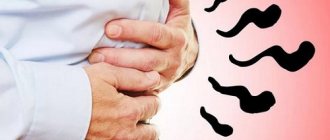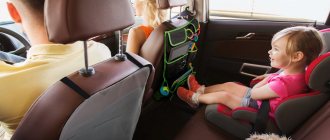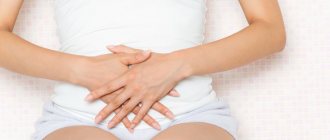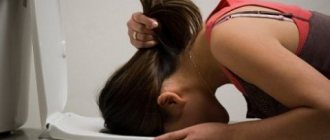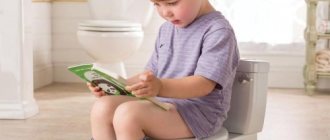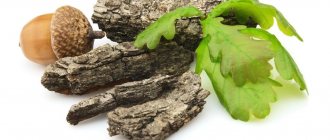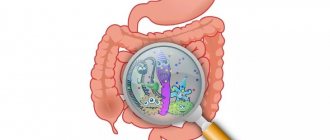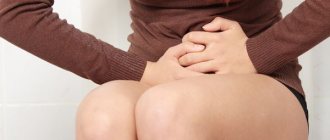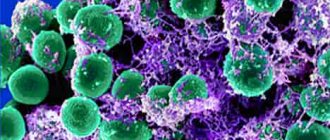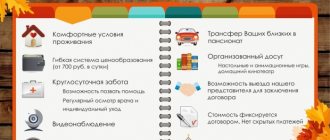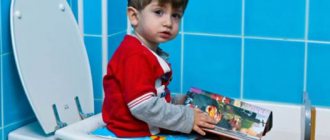Article prepared by:
Vasily Babkinsky
Doctor of the highest category
Parents are always worried about changes in the child's condition. Often the fears of mothers and fathers are not confirmed. However, water diarrhea in a child is not a harmless disorder. Watery diarrhea in young children, especially long-term, may indicate a serious illness and lead to negative consequences.
Watery diarrhea in a child should not be ignored
Symptoms
Severe diarrhea in a child is often accompanied by accompanying symptoms:
- pain syndrome in the abdominal area. It manifests itself in attacks, alternating periodically, in the intervals between spasms watery stools occur;
- an increase in the child’s body temperature indicates rotavirus infection, the presence of parasites, food poisoning;
- the appearance of attacks of nausea and vomiting is a signal of intoxication;
- belching, indicating the presence of chronic diseases of the gastrointestinal tract.
Symptoms are also characterized by an increase in the frequency of bowel movements; mucus and bloody discharge may be observed. The consistency of stool with diarrhea can acquire a mushy, liquid consistency.
A serious indicator of a symptom of a specific disease during diarrhea is the color of the child’s stool:
- At best, black stools indicate the negative effects of medications and poisoning with poor-quality food products. At worst - bleeding in the upper digestive tract;
- The white color of liquid stool indicates a lack of bile and impaired liver activity. A similar sign may indicate hepatitis;
- the green color spectrum reveals the process of intoxication of the child’s body, the activated pathogen of the intestinal microflora;
- yellow baby diarrhea is less dangerous. This color characterizes indigestion and can be cured at home;
- watery, transparent stools are fraught with serious consequences. This type of diarrhea can be a harbinger of cholera. Acute intestinal infection is difficult to cure. The feces are odorless and resemble rice water.
Causes
The most common causes of watery stool in children include:
Dysbacteriosis. Frequent watery diarrhea in a child occurs against the background of a violation of the intestinal microflora, when the ratio of beneficial and harmful bacteria significantly deviates from the norm. The stool contains mucus and undigested food, becomes green, has a sour odor, and becomes foamy. Dysbacteriosis is characterized by frequent alternation between diarrhea and constipation. This pathology should be treated by a doctor after appropriate diagnosis. It can be provoked by long-term use of antibacterial drugs, poor nutrition, immaturity of the gastrointestinal tract, unfavorable environmental conditions, and intestinal infections.
Disturbed diet. In this case, diarrhea occurs without fever. It can be caused by eating large amounts of sweets, unripe fruits, and raw vegetables.
The body's reaction to the introduction of a new product. It often manifests itself in a child as watery diarrhea. The disorder is provoked by cereals, honey, whole cow's milk, and some fruits and vegetables.
Colds and infectious diseases. In addition to the usual clinical symptoms, young children may develop loose, watery stools due to general intoxication of the body. As soon as the underlying disease passes, the functioning of the digestive organs improves.
Intestinal infections. The patient experiences a rise in temperature, abdominal pain, nausea and vomiting. At the first symptoms of pathology, it is necessary to seek medical help, since after each act of defecation the body loses many useful substances and fluids. This can lead to dehydration of the baby. In early childhood it is especially dangerous, and in the absence of proper treatment can result in seizures and death.
Severe stress, neurosis, fear. This type of diarrhea does not pose a threat to the baby's health.
It is important to find the cause of the anxiety and try to eliminate it.
Rotavirus. If a child experiences severe water diarrhea accompanied by an elevated temperature, this may indicate a rotavirus infection.
Often the disease occurs in an acute form, causing pain in the abdomen, nausea, episodes of vomiting, and deterioration in general health.
A similar condition can be caused by other reasons: food poisoning, exacerbation of chronic ailments, teething, gastrointestinal diseases, helminthic infestations.
Associated signs of diarrhea
Black water diarrhea indicates internal bleeding. The baby's pathology may be congenital. The baby must be urgently taken to the hospital.
White stool is detected in children whose liver function is impaired. Diarrhea of this color may be a sign of hepatitis infection.
Green discharge in a baby is a symptom of intoxication in the body. Pathogenic microflora in the process of vital activity releases toxins that enter the child’s blood. Water diarrhea can occur in children with cholera.
- The baby has a dry mouth and is constantly thirsty.
- The folds in the skin stop straightening out.
- Urination becomes rare.
- In infants, the fontanelle sinks.
- The baby loses interest in toys and becomes very lethargic.
- The skin near the eyes darkens and the heartbeat accelerates.
How to avoid dehydration?
Water diarrhea in a child is dangerous because it develops very intensively. The baby needs a lot of fluid. To compensate for the lack of fluid, you can give him juices and compotes. With intense diarrhea, the child loses a lot of salt. A deficiency of vitamins and minerals can lead to dire consequences. Electrolyte imbalance can cause cardiac arrest.
Regidron can be used as a means to restore water-salt balance. A sachet of the drug is dissolved in a liter of water and given to the baby every 10 minutes. However, Regidron solution should not be taken in large sips, as the baby may experience vomiting.
Saline solution can be prepared at home. Pour 100 grams of raisins with a liter of water and place on low heat. The mixture must be boiled for 30 minutes. After this, add a teaspoon of salt and a little sugar to the solution. Strain the cooled broth through cheesecloth.
Diarrhea rarely occurs as an independent phenomenon; it is usually accompanied by other symptoms:
- nausea and vomiting;
- flatulence;
- abdominal pain, usually cramping;
- the appearance of mucus, blood or undigested food in the stool.
Fever and vomiting accompanying diarrhea are a sign of a pathological organism entering the child’s body. Symptoms appear 8-12 hours after the onset of diarrhea.
With each bowel movement and vomiting, the child loses from 100 to 300 ml of fluid, moisture evaporates through the skin, which leads to rapid dehydration.
Signs of dehydration:
- weakness, sometimes loss of consciousness;
- convulsions;
- infrequent urination, rich yellow urine;
- loss of shine in the eyes;
- dry mouth and lips;
- rapid heartbeat;
- decrease in blood pressure.
Frequent bowel movements cause irritation of the rectum and anus, and a rash and redness may appear around it.
For bleeding of the lower and middle intestines.
If diarrhea is caused by a bacterial or viral infection, the baby will have green stools.
This color is characteristic of gastric bleeding.
If a child has yellow stool, this indicates dyspeptic disorders.
With enzyme deficiency, white feces appear.
The appearance of blood in the stool is a very dangerous symptom that occurs when the intestines are damaged.
The first thing to do if you have watery diarrhea is to consult a doctor and organize the correct drinking regimen. To do this, the child should often be given small portions of clean water, a decoction of dried fruits, and weak and unsweetened tea. The drink or water should be warmed to room temperature - too warm or cold liquid can have a stimulating effect on digestion, which will increase intestinal motility.
The child’s diet should also be adjusted:
- exclude fried and fatty foods, pickles, smoked foods, and confectionery from the menu;
- the main dish in the diet should be well-cooked porridge (rice, buckwheat, oatmeal), baked potatoes, cereal soups;
- The child is allowed to drink tea, fruit drinks, decoction of dried fruits, and regular drinking water. In this case, you should avoid freshly squeezed fruit juices (especially those with pulp), carbonated and sweet drinks.
If your child, in addition to watery diarrhea, experiences fever, abdominal pain, loss of appetite, nausea or vomiting, consult a doctor as soon as possible.
The first consequence of very loose stools in a child is loss of fluid. Any method of dealing with loose stools includes replenishing the water-salt balance. Watery diarrhea causes dehydration.
Its main symptoms:
- dry mouth, thirst;
- the fontanel sinks in babies;
- weakness, loss of interest, lethargy;
- darkening of the skin around the eyes, rapid heartbeat.
Restoring fluid levels is done by drinking frequent, small portions. Rosehip decoction and clean boiled water are suitable.
The salt balance is able to restore the Regidron solution. It is sold in powder format and is safe for children. It is enough to dilute the mixture with boiling water and give the baby one teaspoon every fifteen minutes.
Loose stools in infants are normal
Loose stools in breastfed babies have been considered normal for several decades. With the development of diagnostic methods and the study of digestive processes, it became clear that eating only liquid food is manifested by this symptom.
Types of norm include:
- yellow, orange, greenish color;
- the presence of mucus or strands;
- pasty, watery stool with remains of undigested milk.
When changes occur in a baby, pay attention to the general condition. The child should be active, gain weight well, and maintain a pinkish or pale pink complexion.
Watery stools also occur when the baby receives mostly foremilk and the hindmilk is expressed or retained. Foremilk is less fatty and contains more water.
If your child is vomiting and has a fever
When watery diarrhea with fever, the cause may lie in rotavirus infection. The disease has a high degree of danger and risk of infection, often affecting preschool children. A sharp increase in body temperature indicates the rapid proliferation of harmful bacteria.
In addition to the infectious nature of the disease, the baby could have been poisoned by low-quality products or become infected with parasites. Concomitant nausea with vomiting reveals intoxication, thus performing a protective function.
Diarrhea with vomiting and fever
A sharp rise in temperature indicates the infectious nature of the disease. Pathogenic bacteria multiply in the intestines of a sick child. With diarrhea, the body tries to get rid of toxins.
If a child eats low-quality food, he or she may become poisoned. Vomiting should not be considered as a separate disease. It performs a protective function that helps the body get rid of harmful components.
Watery diarrhea in a child occurs after harmful bacteria enter the intestines. Frequent urges lead to rapid depletion of the child’s vitality. The baby is suffering from dehydration. A baby with such symptoms should be taken to the hospital as quickly as possible.
What to do and how to stop
In most cases, diarrhea with fever is of infectious origin. If your child has repeated diarrhea with high fever, you should immediately consult a doctor.
Before the doctor arrives, the baby can be given an antipyretic, for example, paracetamol or ibuprofen. Since during diarrhea the body loses a lot of fluid, which can be very dangerous in children under 3 years of age, the child must be given fluids (still mineral water, cooled boiled water or Regidron). Before the doctor arrives, you can give the child an adsorbent - Enterosgel, Smecta, Neosmectin, etc.
The causative agent of the infection can only be determined by doing a stool test. This takes about 7 days. Since the child needs immediate help, the doctor will prescribe treatment based on a thorough examination. The success of treatment largely depends on how quickly measures were taken. In addition to enterosorbents and antipyretics, the doctor prescribes special drinking solutions (Regidron), probiotics (Bifikol, Bifidumbacterin, etc.). In case of a bacterial infection, antibacterial drugs may be prescribed.
Diarrhea and fever always occur unexpectedly; in order to know how to act in such situations, you should understand the possible causes of this manifestation.
Symptoms
Signs of severe diarrhea in a child include:
- High temperature, which often jumps to 40 degrees.
- When watery diarrhea appears, children complain of abdominal pain.
- Loose stools are accompanied by attacks of vomiting and nausea.
- Diseases of the digestive system manifest themselves in the form of belching.
Additional complementary foods will have to be cancelled. Formula-fed babies must be given special formulas that are gluten- and lactose-free.
The baby should not suffer from nutritional deficiencies, as this can have a negative impact on his development. Breastfeeding during diarrhea should continue as before.
Don't forget to wash your baby after each bowel movement. Otherwise, he may experience skin irritation near the anus.
Do not try to get rid of diarrhea on your own by taking advertised pills. You don’t know the cause of your baby’s digestive upset. Incorrect treatment can only worsen the child’s condition.
Blueberry jelly
You can use herbal infusions only if there is no allergic reaction.
There are several effective recipes to quickly get rid of diarrhea:
- Mix fennel, chopped oak bark and sage in equal proportions. To prepare a liter of solution, prepare 1 tbsp. spoon of herbal mixture. The broth should be simmered over low heat for 30 minutes. After this, the solution is filtered through cheesecloth. The finished infusion should be given to the child 100 ml 3 times a day.
- Rinse a spoonful of rice cereal in cold water. Place the rice in boiling water and cook for 40 minutes. Pass the solution through a fine sieve. The resulting decoction helps with all forms of diarrhea. It contains substances that help strengthen loose stools.
- Blueberry jelly is a delicious dish that kids eat with great pleasure. Dissolve a spoonful of starch in 100 ml of cold water. Add blueberries to boiling water and begin to gradually pour in the dissolved starch. To prevent the formation of lumps, the solution must be stirred constantly. The jelly will be ready within 15 minutes.
Diet
Exclude from the diet everything that is poorly digestible and causes increased gas formation, for example, legumes, fresh vegetables and fruits, and acidic foods.
For children under one year old with mild diarrhea, continue feeding with breast milk or formula, as well as complementary foods and fermented milk products. If a child’s diarrhea continues for more than 3 weeks, a treatment table is prescribed taking into account the disease that caused the diarrhea.
For acute diarrhea, it is recommended to use:
- White bread crackers
- Soups with weak broths
- Chopped meat or fish cutlets
- Rice or semolina porridge
- Fruit and berry jelly
- Decoctions of blueberries and black currants
- Strong tea
Meals are taken in small portions 5 to 8 times a day.
Treatment method
Depending on the nature of the watery stool, treatment methods are selected. In some cases, you can help your baby yourself. For example, if a child is passing yellow water, bowel movements are infrequent. The main indicators for calling a doctor are:
- frequent vomiting;
- dry tongue;
- no urination for more than six hours;
- bloody stools;
- increase in body temperature.
The listed symptoms indicate that you urgently need to contact a pediatric specialist. Particular care is required in case of white liquid diarrhea.
First aid for diarrhea in a child
At home, you can stop diarrhea by taking the following measures:
- replenishment of water balance;
- do not stop breastfeeding;
- Symptoms of loose stools can be alleviated by safe medications - sorbents. These include natural preparations: Smecta, activated carbon, Enterosgel. Medicines remove increased gas formation, in addition to the main function of removing toxins;
- After each act of defecation, rinse the anus and lightly coat with moisturizing baby cream.
Loose stools in a child are a common problem that parents have to deal with. Most mothers do not panic when their children have intestinal upset. Although the problem often arises due to minor factors, sometimes diarrhea in a child is a sign of a serious infection. It is important to understand the real causes of loose stools and how to help your baby.
In a small child, bowel function is unstable. Therefore, diarrhea can develop even from eating familiar foods in larger quantities than the baby is used to.
It is normal for a child under two months to have loose stools. In addition, you don’t always need to rush to immediately give your baby medications that stop the urge to defecate. Sometimes, to restore bowel function, it is enough to adjust your diet and ensure you drink plenty of fluids.
Diarrhea is characterized by the following symptoms:
- spasmodic pain;
- loose, watery stools;
- frequent uncontrollable urge to defecate.
It is important to know how to understand that a child needs emergency help. If acts of defecation occur 8 times a day or more often, and the consistency of the stool has acquired a greenish tint, you need urgent help.
Such diarrhea in children often poses a serious danger. Together with feces, the baby’s body loses many valuable microelements, the qualitative composition of the blood changes and dehydration occurs.
Diarrhea in a small child can be of several types. The table below describes the types of disorders and the main causes that cause them.
| Infectious | Infections, viruses and parasites |
| Nutritional | Wrong diet |
| Dyspeptic | Secretory insufficiency of the gastrointestinal tract |
| Toxic | Kidney failure or poisoning |
| Medication | Taking antibiotics and other medications |
| Neurogenic | Stress, worries, fears |
Diarrhea is also classified according to the type of discharge.
Causes of diarrhea
Before stopping diarrhea in a child, you will need to clearly determine the cause of the problem. Sometimes it is simple, but with certain diagnoses, competent treatment is required.
Let's look at the common causes of diarrhea in children:
- Errors in diet;
- Individual food intolerance;
- Food poisoning;
- Intestinal dysbiosis;
- Parasitic disease.
Although first aid for diarrhea is often the same, in order to normalize intestinal function, you will need to eliminate the cause of the disorder.
The newborn intestines are very sensitive. Some babies, even when breastfed, experience diarrhea at every meal. Usually this condition does not require any special treatment or correction.
As the baby grows up and begins to eat a variety of foods, the disorder may occur from eating raw vegetables or fruits. Fried, spicy and fatty foods can also lead to intestinal problems. Therefore, in order to prevent diarrhea in a child, you should carefully monitor his diet and feed him at the same time.
Diarrhea in a child sometimes develops due to the wrong combination of foods. For example, if you drink vegetables with milk, the problem will worsen. It is important to remember that there are foods that are strictly contraindicated for children:
- pork;
- mushrooms;
- raw eggs;
- peanut;
- fatty fish;
- goose and duck in any form.
You should not spoil your child with sweet carbonated drinks, which negatively affect intestinal function and cause loose stools in children. Diarrhea in a child, the causes of which were hidden in dietary errors, goes away on its own after removing inappropriate foods from the menu.
Sometimes parents cannot understand why their child has loose stools. Children of the same age eat the same dishes, but only one of them has intestinal problems. The point may be that the baby’s body perceives certain foods in a special way.
It is possible to determine what exactly the baby has an unfavorable reaction to only by consistently eliminating certain nutritional components. Lactase deficiency is most common in children. With this disease, cow's milk is not processed, but provokes fermentation. To stop diarrhea in children, you need to give up certain foods.
Individual intolerances that cause intestinal upset are usually associated with eating fatty meats, whole milk or raw vegetables and fruits.
Young children can have diarrhea if they do not maintain hygiene, including before eating, or simply put their hands in their mouth. It is rare for parents to allow their child to eat something that is not fresh. But sometimes it’s simply impossible to keep track of a curious researcher.
To avoid food poisoning, you must teach your child to always wash their hands before eating, after using the toilet, and after any contact with pets. Dogs and cats are carriers of serious diseases that cause diarrhea.
Parents are required to do a lot for the safety of their baby. The following recommendations will help:
- When preparing food, wash fresh vegetables and fruits with soap and pour boiling water over them;
- Boil or purify water in a reliable manner;
- Immediately place prepared foods in the refrigerator.
By following these recommendations, you won’t have to look for a cure for diarrhea.
Not everyone understands what dysbiosis is. The intestines of a healthy person contain both beneficial and harmful bacteria. Due to the influence of various factors, this balance is disrupted. Pathogenic flora suppresses the work of beneficial bacteria. This condition is called dysbiosis and it can provoke children's diarrhea.
Dysbacteriosis can develop for the following reasons:
- taking antibiotics;
- penetration of intestinal infections;
- severe decrease in immunity;
- unbalanced diet.
Treatment of diarrhea in children caused by dysbiosis begins with restoration of normal intestinal microflora.
Some mothers complain that their babies constantly have diarrhea. If everything is fine with your diet, perhaps the cause of the illness lies in a parasitic disease.
The proliferation of microorganisms such as Giardia leads to inflammatory processes in the mucous membrane of the stomach and intestines. The frequency of diarrhea in such diseases is less, but persists for a long period. With parasitic diseases, in addition to diarrhea, children experience fever, rashes of various types, loss of weight and appetite.
There are disorders that are accompanied by diarrhea, but the baby urgently needs emergency medical care. Acute appendicitis often presents with severe diarrhea and nausea. If surgery is not performed on time, there is a risk of peritonitis and even death.
Similar symptoms are observed with volvulus. The condition is accompanied by severe pain and elevated body temperature.
Danger of diarrhea
Knowing why diarrhea is dangerous, you can react in time and stop diarrhea. The condition is dangerous because it leads to:
- severe dehydration;
- hemorrhoids;
- exhaustion;
- hypovitaminosis;
- rectal prolapse.
It is important to clearly understand what to do if a child has diarrhea in order to prevent complications from developing.
If a child has diarrhea, the doctor will tell you what to do. But before treating the baby, he will conduct the following studies:
- examine the patient and feel the intestines;
- will give a referral for stool analysis;
- prescribe a blood test for parasites;
- will assess the speed of processes in the intestines.
After the examinations are carried out and the results are studied, the doctor will tell you what to do if the child has diarrhea.
Treatment of diarrhea
Most often, treatment of diarrhea in children begins with rehydration - restoration of water-salt metabolism in the body. Both pharmaceutical products and those prepared independently are suitable for this.
The most popular drugs for restoring balance in diarrhea include Regidron and Citroglucosolan. It's easy to make such a composition yourself. To do this, you need to mix a teaspoon of salt and sugar and half a spoon of soda in a liter of water. The solution is taken in small portions, at least for the first day.
It is easier to get rid of diarrhea by taking sorbents. You should take Atoxil, Smecta or Activated Carbon. This group of drugs helps remove substances from the body that cause diarrhea.
If the problems are caused by an imbalance in the bacterial balance in the intestines, help with diarrhea in a child will involve the use of probiotics. It is allowed to introduce fermented milk products into the diet.
In children, treatment of a disorder caused by a parasitic disease should be carried out only after examination by a doctor. In children, the healing process is complicated by severe pain and fever.
There is an answer to the question “how to quickly cure a severe intestinal disorder,” but this method is not always acceptable. In such cases, take Loperamide or Levomycetin. When deciding whether to take these drugs or not, it is worth considering how many days the diarrhea lasts, what its causes are and whether measures have been taken to eliminate them.
Knowing how to cure diarrhea in a child protects his health and life. Understanding how to get rid of such a problem and prevent it will give you a feeling of calm and confidence in any life situations.
Diarrhea in a child: what to do? First, you need to know that diarrhea, like vomiting, is a mechanism of the body’s defense against pathogens and toxins. Therefore, there is no need to rush to suppress diarrhea with medications. Secondly, it is necessary to grasp the line when a child needs medical help, and not just a diet and heavy drinking regimen.
The causes of diarrhea in children very often lie on the surface: they ate something wrong or too much, and even with unwashed hands, and at the same time, diarrhea is a very common symptom of various diseases. Its appearance cannot be ignored, especially in a preschool child. The causes of diarrhea include:
- Diet errors. If a child has eaten a lot of hard-to-digest food or tried some new food, he may have short-term diarrhea. As a rule, it is accompanied by bloating, discomfort, and minor abdominal pain. Difficult-to-digest foods include raw fruits and vegetables, fatty, spicy foods. If it is consumed with sugary drinks or milk, the problem may worsen. It is strictly forbidden to feed young (preschool) children mushrooms, fatty pork and fish, goose, duck, raw eggs, and whole nuts (especially peanuts). You should not abuse fast food and sweet carbonated drinks, as they contain a lot of dyes, preservatives, flavors, and flavor enhancers. If the cause of diarrhea is in the diet, then it quickly goes away when inappropriate foods are eliminated from the diet.
- Individual food intolerance. Depends on the characteristics of the individual child’s body. Someone may react to milk, someone to fatty meat, someone to semolina porridge, someone to raw vegetables and fruits. In addition, the child may have lactase deficiency - a deficiency of the lactase enzyme and poor digestion of milk sugar - lactose. This leads to a constant fermentation process in the digestive system, flatulence, and increased fluid content in the intestines. The way out of this situation is to exclude whole cow's milk from the diet, while you can leave fermented milk products.
- Poisoning and intestinal infections. When pathogens of intestinal infection enter the body, the digestive system is the first to react, the intestinal mucosa becomes inflamed and diarrhea begins. This is the main symptom of any intestinal infection. Diarrhea in a 3-year-old child can be caused by simple failure to comply with hygiene rules. It is not always possible to keep track of the little explorer, especially on the street or playground. If there is a suspicion of dysentery, salmonellosis, amoebiasis, etc., the child will be offered to be hospitalized. These diseases are accompanied by severe dehydration, sudden weight loss, high fever, and vomiting. Prevention of intestinal infections is important: washing hands after going outside, using the toilet, or interacting with animals; heat treatment of products; washing fresh vegetables and fruits under running water; high-quality and tested water; proper food storage.
- Dysbacteriosis. The causes of dysbiosis in childhood can be different: taking antibiotics, eating disorders, intestinal infections, worms. In all of these cases, the child may have diarrhea. To get rid of diarrhea, it is necessary to eliminate the root cause of dysbiosis. It is necessary to find out which beneficial bacteria are missing and replenish them, including therapy with probiotics, enzymes, vitamins, and diet.
- Helminthic infestations are parasites that inhabit the intestines. Their reproduction leads to inflammation of the intestinal mucosa and disruption of digestion. “Worms” are transmitted from an infected person to a healthy person through common household items, dishes, and toys. With helminthic infestations, diarrhea is not frequent, but long-lasting and chronic.
- Acute surgery. With appendicitis, peritonitis, intussusception (intestinal obstruction, volvulus), diarrhea or vomiting can sometimes occur. The child needs immediate hospitalization.
- Irritable bowel syndrome. This diagnosis is often given to children aged 1 to 5 years who have chronic diarrhea (more than 2 weeks in a row). It is performed when stool and urine tests are normal and no intestinal pathogens or pathologies are found. The cause of irritable bowel disease has not been fully identified. Many doctors are inclined to believe that the main factor is the child’s psychological state, negative emotions, fears, stress, and unfavorable atmosphere in the family.
What to do
Home treatment can reduce the impact of dangerous symptoms, provided that the following recommendations are followed:
- give the patient plenty of drink - Borzhom or Essentuki mineral water, dried fruit compotes, weak fruit drinks, weak tea with honey;
- follow a dietary diet – boiled cereals, vegetable soups;
- take fermented milk products, non-acidic cheeses, low-fat cottage cheese;
- drink starchy jelly for health;
- eat more boiled vegetables and baked fruits;
- You can bring down the temperature above 38 degrees with Nurofen, Aspirin, Paracetamol;
- take calcium supplements, pro- or prebiotics with pectin, acidophilus.
First aid
If the temperature rises and bowel movements appear, the first aid for the patient will be the following measures:
- at the first signs of intestinal poisoning, induce vomiting to lavage the stomach - drink a solution of potassium permanganate or soda, repeat until the stomach is completely empty, then take an absorbent;
- to prevent signs of dehydration, every 10 minutes give the patient a sip of Regidron (a packet per liter of water), drink plenty of fluids;
- on the first day of treatment for severe weakness, you should refuse to eat, drink more and rest, then follow a light diet and drink broths;
- The temperature during diarrhea should not drop to 37 degrees (it indicates that the body is in the process of independently fighting the infection). In this situation, provide the patient with complete rest.
Drug treatment
In case of a complicated course of the disease, diagnostics are required to prescribe the correct drugs for treatment. Diagnosis measures include the use of coprograms, stool tests for dysbacteriosis and helminths, general and biochemical blood tests, and abdominal ultrasound. Depending on the cause of diarrhea, treatment methods include:
- reception of sorbents.
- gastric lavage in case of severe vomiting;
- rehydration therapy for fluid loss - Regidron, Gastrolita, Citroglucosolan, chamomile tea, pharmaceutical saline solution;
- antipyretics for headaches - Paracetamol, Nurofen;
- taking fluoroquinolone antibiotics or cephalosporins - in severe condition, presence of blood in diarrhea
- lacto- and bifidobacteria to restore intestinal microflora during rotavirus infection;
- taking anti-inflammatory drugs on the first day of illness - Indomethacin, Diclofenac, Sulfasalosin;
- When diarrhea occurs, it is useful to take Festal or Mezim to stimulate intestinal function and remove toxins.
Traditional treatment
If diarrhea and high fever appear in an adult or child, you can use traditional medicine recipes to help get rid of dehydration:
- Taking rice or pomegranate broth, mint infusion, fresh blueberries.
- Consuming dry starch dissolved in water, diluted carrot puree, chamomile or mint tea.
- Taking rehydration solutions - take a tablespoon of sugar, a teaspoon of salt and half a teaspoon of soda per liter of boiled water. Or dissolve eight teaspoons of sugar, a teaspoon of salt, and the fresh juice of two oranges or grapefruits in a liter. It is necessary to give the patient food every five minutes in small portions.
Nutrition adjustments
When the diarrhea is safely over, there is no need to immediately cook all those cutlets for your son or daughter and carry all the cookies that the child did not eat while he was ill. You should stick to a gentle diet for a few more days. The diet of a child from 1.5 years old can include porridge, tea, vegetable soups without meat. For a child over 2 years old, you can add one small curd to tea without additives, pieces of fruit or food coloring.
Then the diet should be increased gradually, adding new products to the toddler’s menu every day, starting with boiled meat, steamed cutlets and ending (last) with a piece of chocolate or his favorite candy.
One of the main methods of treating diarrhea with water is diet. Changing your diet is considered the main initial measure for treating diarrhea with water. Irritable bowel needs a recovery period. Rough, hard-to-digest foods are excluded.
Stool goes away like water if you limit your diet to crackers, rice porridge, strong tea, compote. You cannot eat salty, fried, spicy, smoked foods. Gradually, the principle of eating can be diversified with chicken breast and white bread. Infants should continue breastfeeding; if the baby is on formula, it is necessary to remove foods containing gluten.
Prevention
If a child has a frequent urge to defecate, if defecation occurs with liquid feces, you need to adhere to a diet and follow the rules of hygiene.
Diet:
- A baby should not stop feeding breast milk. You need to apply it to your breast more often.
- Add 2-3 teaspoons of Regidron to artificial feeding.
- Older children should include more slimy porridges in their diet: oatmeal, rice.
- Offer low-fat broths with meat so as not to burden the stomach and intestines.
- The menu includes baked apples, bananas, and persimmons.
- It is possible to include a diet of eggs: 1 pc. per day.
- As a sweet treat, offer your child biscuits or crackers.
Water diarrhea in a child occurs due to disruption of the digestive system, which leads to a change in the consistency of stool and an increase in their frequency. With diarrhea, stool becomes liquid, sometimes becoming similar to water. The reasons for this condition can be varied. The main danger of water diarrhea is the rapid loss of fluid and the possibility of developing dehydration.
ethnoscience
Treating your baby with natural remedies is not contraindicated. If a child has serious illnesses or damage to the gastrointestinal tract, then consultation with a doctor is mandatory. Some plants and techniques can only aggravate the pathology.
Traditional medicine includes decoctions, tinctures of herbs and flowers. You should definitely make sure that the little patient does not have an allergic reaction to certain plants.
There are known effective folk recipes for the treatment of watery diarrhea:
- Rinse the rice with cold water and add to boiling water. Cook for forty minutes. Pass the resulting drink through a sieve and drink in small sips;
- take St. John's wort and sage in equal proportions. Pour half a liter of boiling water, cover tightly with a lid. Three hours later, you can take a quarter glass after meals;
- Strong black tea is good to drink after meals. Recommended for children from the age of two.
